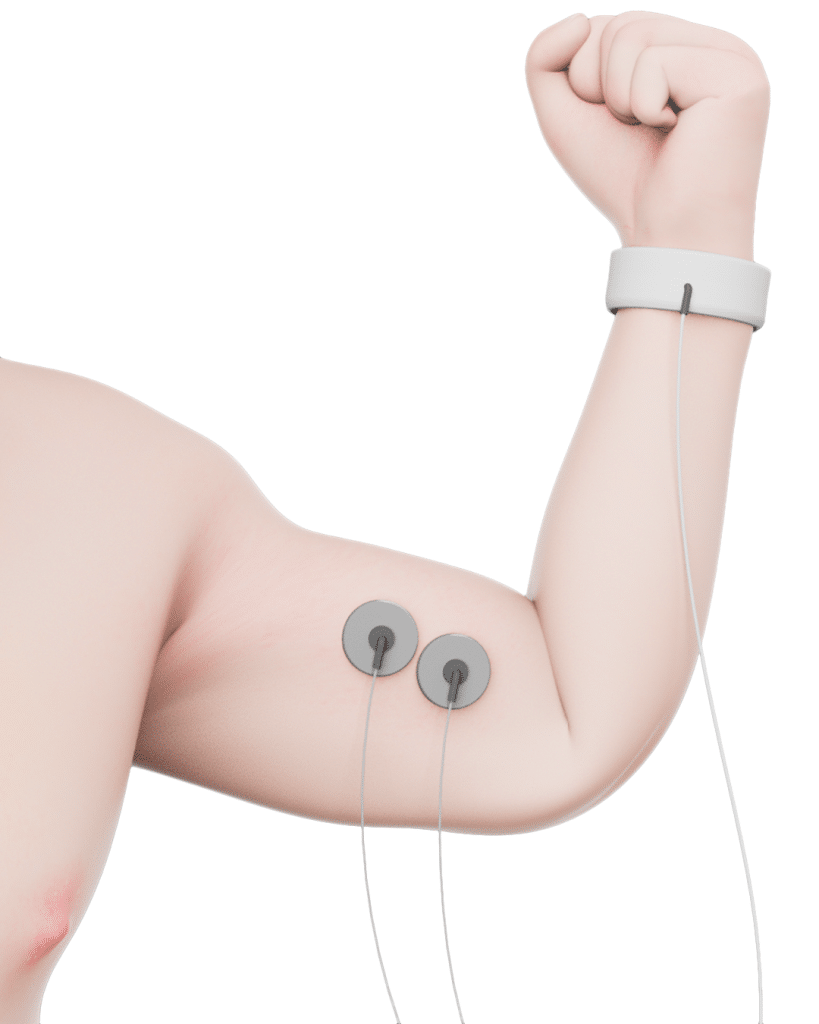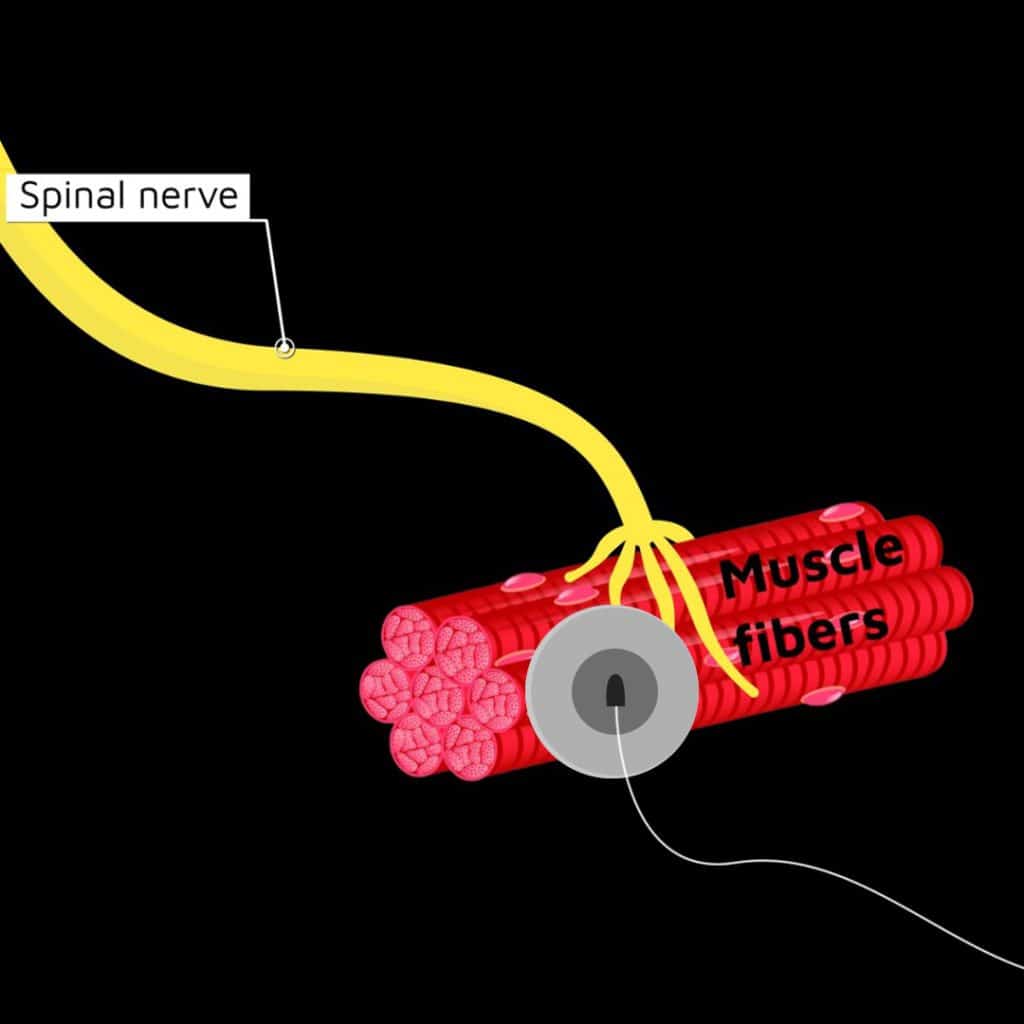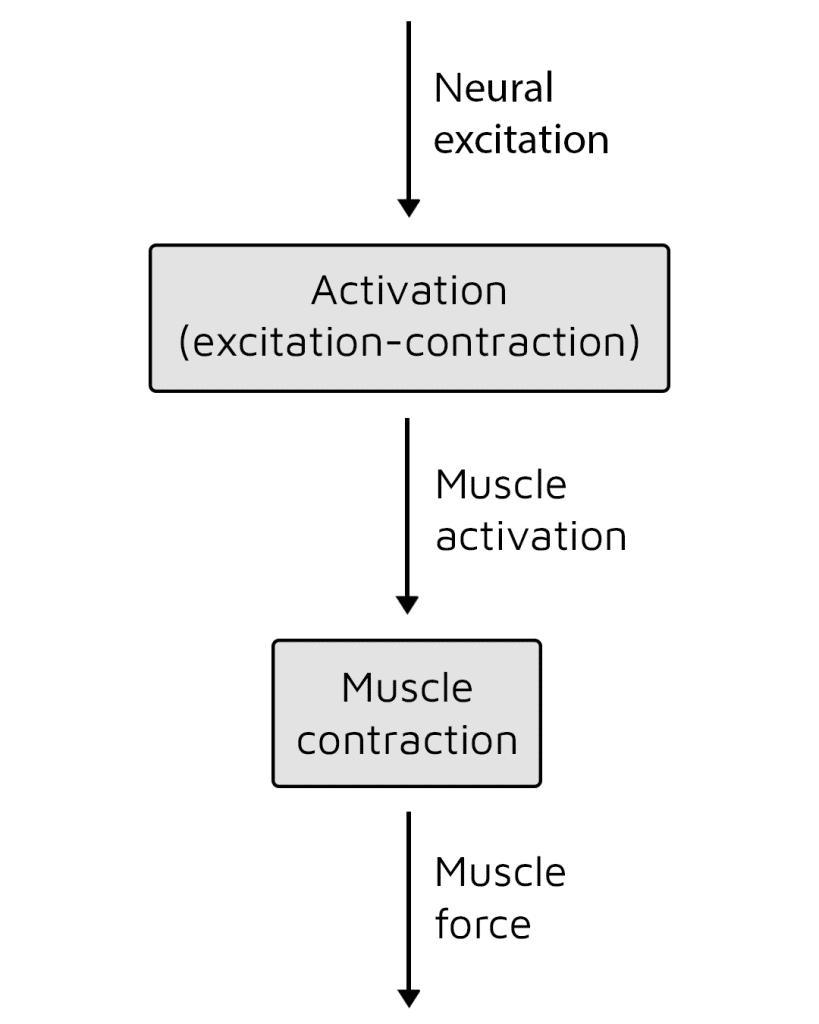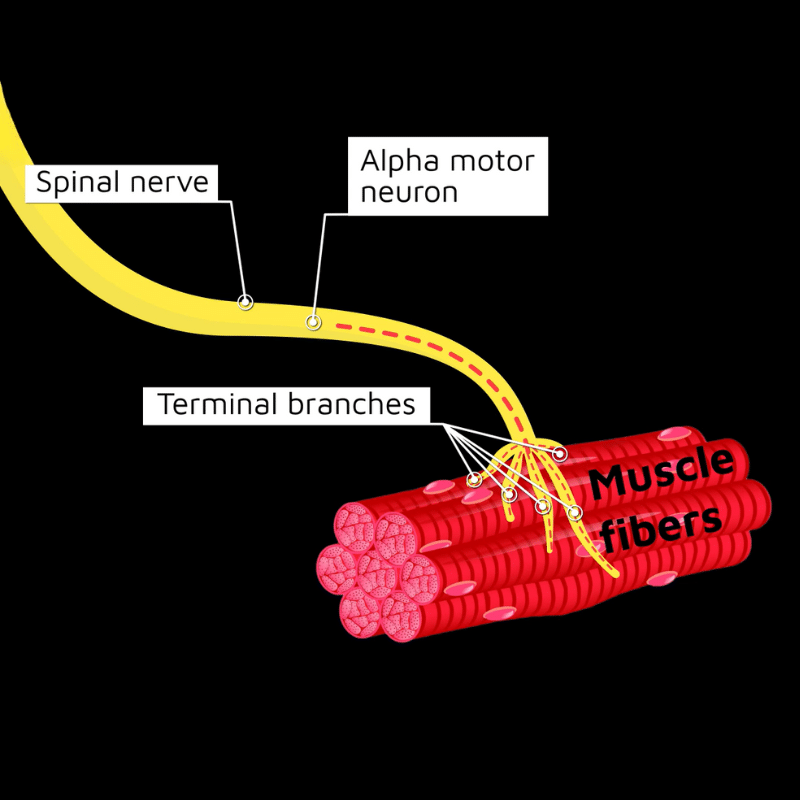Understanding the intricate connection between muscle excitation and muscle development is vital for achieving peak physical fitness. This journey into muscle science often leads us to consider the remarkable technology known as Electromyography, or EMG.
In this Muscle and Motion article, we’ll explore surface EMG and attempt to determine whether it is a reliable indicator of muscle growth.
What is surface EMG?
Electromyography (EMG) is a technology employed to measure muscle activity. The primary type of EMG device is the surface EMG (sEMG), which involves placing electrodes on the skin directly above the muscles researchers are interested in studying. In some cases, needle electrodes are used to collect data from within the muscle itself, a method known as intramuscular EMG. The signal recorded by these electrodes is referred to as the electromyogram (EMG), which displays the output of motor neurons supplying the muscles under examination.[1]

What does EMG measure?
EMG measures electrical events in muscle activity, not the mechanical aspects of muscle contraction. In other words, EMG provides information about the excitation and timing of muscle fibers but doesn’t directly measure the force or mechanical movement produced by those muscle contractions.[1]
When interpreting surface EMG studies, it’s easy to confuse two important concepts: excitation and activation. It’s crucial to distinguish them, especially in EMG discussions, as EMG primarily measures muscle excitation, not activation. Let’s clarify these differences.
Activation Vs. Excitation
Muscle Activation:
- Activation refers to the overall process of a muscle contracting and generating force (i.e., not including passive contributions) relative to its maximum ability to produce force actively.[2]
- It encompasses all the steps from the initial electrical signal (excitation) to the actual physical contraction of muscle fibers.
- Activation includes events such as depolarization of the muscle cell membrane, release of calcium ions, binding of calcium to troponin, and cross-bridge formation between actin and myosin filaments.
- Activation is a broader term that covers the entire sequence of events leading to muscle contraction.[1]
Excitation:
- Excitation is a specific step in the activation process.
- It refers to the initial electrical signal that travels along motor neurons to stimulate the muscle fibers that depolarize all of the muscle fibers that it innervates.[2]
- Excitation starts with the action potential (nerve impulse) reaching the neuromuscular junction, which triggers neurotransmitter release (e.g., acetylcholine).
- These neurotransmitters bind to receptors on the muscle cell membrane, causing depolarization and the initiation of muscle contraction.
- Excitation is the first stage of activation and focuses on the electrical events leading to muscle fiber stimulation.[1]

To summarize, muscle contraction encompasses the entire process of muscle activation, including electrical events (excitation) and mechanical events (force generation). Excitation, on the other hand, specifically refers to the initial electrical signal that triggers muscle fiber stimulation. Now that we understand how EMG measures muscle activity, let’s explore its connection to muscle growth.

Does maximizing EMG amplitude mean more muscle growth?
The relationship between EMG amplitude and muscle growth is a topic that has garnered significant attention in exercise physiology. The initial assumption is that higher EMG amplitudes, indicative of increased muscle excitation, may lead to greater muscle growth. However, this assumption should be weighed carefully, and we should not draw immediate conclusions.
Recent research suggests that while higher surface EMG amplitudes may indeed signify greater muscle excitation during resistance training, more substantial muscle growth isn’t the inevitable outcome.[3,4] Currently, there are no long-term studies supporting the idea that sEMG can predict hypertrophic outcomes, as indicated by Halperin et al. in a 2017 study.[3]
Furthermore, studies have demonstrated that comparable muscle growth can occur across a range of training intensities, from low to high, as long as training is taken to the point of concentric failure.[4] For example, a study by Jenkins et al. found similar muscle growth in groups training with low (30%-1RM) and high (80%-1RM) loads despite differences in EMG amplitude. High-load training did not lead to significantly greater muscle growth compared to low-load training.[5]
Moreover, human and animal studies have demonstrated that mechanical tension (stretch) can elicit muscle growth in denervated muscle. These findings illustrate that a muscle does not need to be excited to grow.[5,6]
In summary, although EMG serves as a valuable tool for comprehending muscle excitation and tracking neurological signals during exercise, there exists no strong connection between maximizing EMG amplitude and muscle growth. Instead of fixating on secondary outcomes (such as EMG) that may have some relevance to muscle growth, our attention should be directed toward studies that directly measure aspects of muscle growth, such as cross-sectional area, thickness, or overall lean-body mass.
At Muscle and Motion, we believe that knowledge is power, and understanding the ‘why’ behind any exercise is essential for your long-term success.
Let the Strength Training App help you achieve your goals! Sign up for free.
Reference:
- Roberts TJ, Gabaldón AM. Interpreting muscle function from EMG: lessons learned from direct measurements of muscle force. Integr Comp Biol 2008;48(2):312–20.
- Vigotsky AD, Halperin I, Lehman GJ, Trajano GS, Vieira TM. Interpreting Signal Amplitudes in Surface Electromyography Studies in Sport and Rehabilitation Sciences. Front Physiol [Internet] 2018 [cited 2023 Oct 4];8:985.
- Halperin I, Vigotsky AD, Foster C, Pyne DB. Strengthening the Practice of Exercise and Sport-Science Research. Int J Sports Physiol Perform. 2018 Feb 1;13(2):127-134. doi: 10.1123/ijspp.2017-0322. Epub 2018 Feb 13. PMID: 28787228.
- Schoenfeld BJ, Grgic J, Van Every DW, Plotkin DL. Loading Recommendations for Muscle Strength, Hypertrophy, and Local Endurance: A Re-Examination of the Repetition Continuum. Sports (Basel) 2021;9(2):32.
- Sola O. M., Christensen D. L., Martin A. W. (1973). Hypertrophy and hyperplasia of adult chicken anterior latissimus dorsi muscles following stretch with and without denervation. Exp. Neurol. 41, 76–100. 10.1016/0014-4886(73)90182-9.
- Simpson C. L., Kim B. D. H., Bourcet M. R., Jones G. R., Jakobi J. M. (2017). Stretch training induces unequal adaptation in muscle fascicles and thickness in medial and lateral gastrocnemii. Scand. J. Med. Sci. Sports. [Epub ahead of print]. 10.1111/sms.12822.


